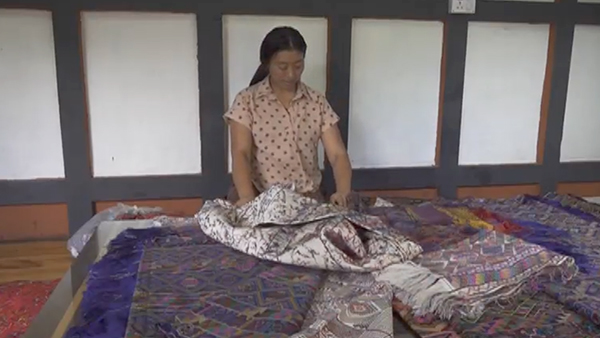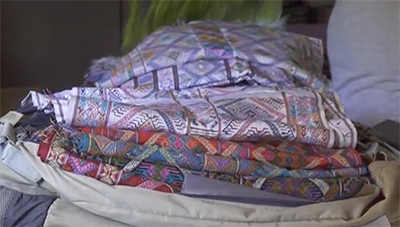 Festivals such as Tshechus have become closed-door events after the COVID-19 pandemic hit the country in March last year. They have almost become a forgotten tale for the public. And this has bought the business of Bhutan’s textile grandeur, Kishuthara, to a standstill.
Festivals such as Tshechus have become closed-door events after the COVID-19 pandemic hit the country in March last year. They have almost become a forgotten tale for the public. And this has bought the business of Bhutan’s textile grandeur, Kishuthara, to a standstill.
Tshering Yangki from Khoma Gewog in Lhuentse began weaving since she was eight. Today, the 36-year-old not only weaves but also hires other women to weave for her. But now, she cannot sell the kiras as in the past.
 Today she has a collection of more than ten Kishutharas, stacked in her home. They are worth more than Nu 1 M. But sadly, she can’t turn the clock back to set things right for her kiras. All she can do is waiting for the pandemic to disappear one fine day so that she can start the business all over again.
Today she has a collection of more than ten Kishutharas, stacked in her home. They are worth more than Nu 1 M. But sadly, she can’t turn the clock back to set things right for her kiras. All she can do is waiting for the pandemic to disappear one fine day so that she can start the business all over again.
“I am still hoping that the pandemic will end soon. My customers are mainly the pilgrims. But due to the pandemic, they no longer buy the kiras. I have also stopped hiring weavers thinking I might face financial problems,” she said.
Before the pandemic, weavers in Khoma used to earn a handsome income from selling kiras. On average, they used to earn more than Nu 200,000 in a year. But today, the income has been reduced by fifty per cent. They are not able to sell the products as in the past.
According to another weaver Sangay Wangmo, their business flourished before the pandemic, but these days, getting even one customer is hard.
“Due to the price hike for threads, we also increased the price for our kiras. This further affected our business,” she said.
Going by the global COVID-19 situation, the pandemic looks far from being over. And with an unpromising market, most women weave based on order today.
And without any alternate source of income for most and more than half of income slashed for few, they sustain on their past savings.
Meanwhile, a weaver takes almost a year to complete weaving the Kira with the most complicated patterns. It also fetches the highest. However, the cost differs depending on the designs and quality of brocades used.
Today, more than 30 households of Khoma Gewog are dependent, exclusively on the textile.
Sonam Tshering
Edited by Chayku












